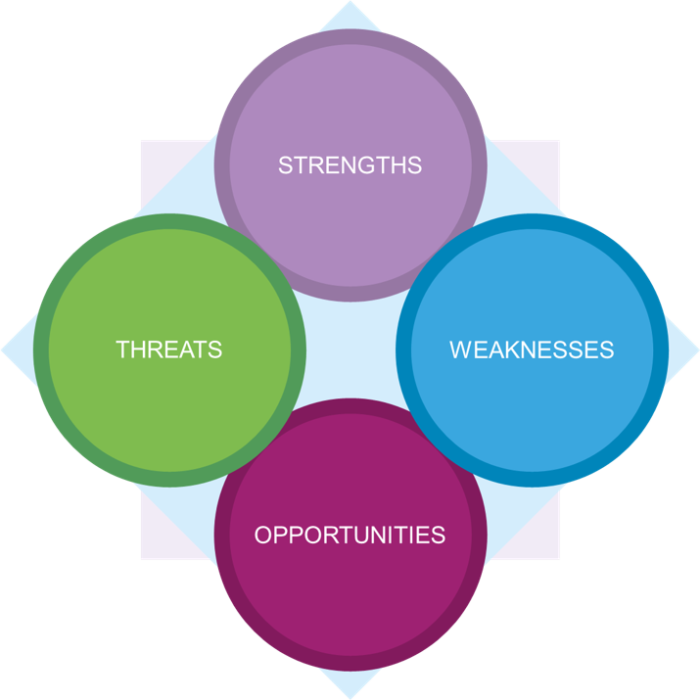SWOT Analysis
SWOT Analysis is used to understand the areas of strength, weakness, opportunity and threat.
The purpose of a SWOT Analysis is to identify the key areas which are currently causing concern as well as those that work particularly well. This then can provide some insight into areas of opportunity to make improvements.
It is beneficial to consider SWOT from both an internal and external perspective.

Elements to consider:
- Strengths - What are the known or perceived strengths? Such as being a collaborative environment, potential to access people, their ideas and talent.
- Weaknesses - What are the known or perceived weaknesses? Such as stakeholders not all engaged, lack of consistency across the University.
- Opportunities - Can any of the strengths or weaknesses be turned into opportunities? Such as greater success of projects through better managed projects, improve stakeholder engagement.
- Threats - What are the potential threats to delivery? Such as continuous barriers for adoption, changes in government regulations.
DOWNLOAD SWOT Analysis (Word)
DOWNLOAD SWOT Analysis (PowerPoint)
Hints & Tips
- Start by identifying the objective for analysis
- Use the team to help identify the strengths and weaknesses involved in achieving the objective.
- It is important that your SWOT analysis is evidence based.
- Consider each point identified to understand whether or not it can be turned into new opportunities.
- To gather more details about the ‘bigger picture’ consider using PESTLE analysis which stands for:
Political, Economic, Sociological, Technological, Legal, Environmental.
